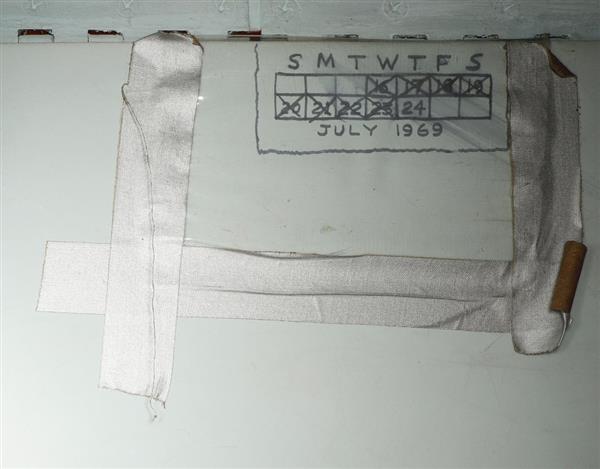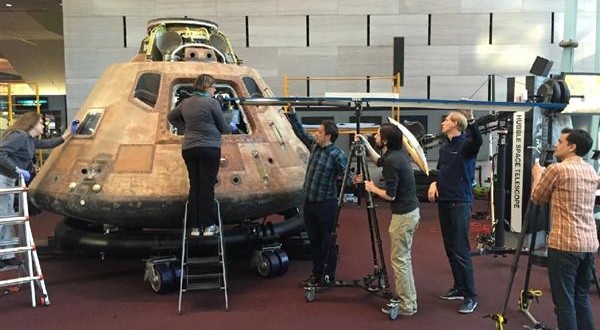After nearly 50 years inside a plastic display case at the Smithsonian’s National Air and Space Museum, Apollo 11’s Command Module, Columbia, has a new story to tell.
A series of never-before-seen handwritten notes and figures left by the astronauts themselves have been revealed thanks to 3D scanning technology, and will be used to help museum curators create a more complete and nuanced account of just what exactly happened during the historic 1969 lunar landing.
After the command module landed in the Pacific Ocean on July 24, 1969, few people were allowed to see the inside. NASA sent the spacecraft off to the National Air and Space Museum in Washington, D.C. the following year, and it’s almost exclusively sat there, preserved, ever since.
Now, Smithsonian researchers are making high-resolution digital scans of everything inside — including some never-before seen markings on the wall, desk diaries, computerized charts, and more.

Among the most interesting nuggets is a two-week calendar scribbled on the side that counts of the eight days of Apollo 11 and its crew, running from July 16 to July 24.
Only three people could have drawn it, of course: Neil Armstrong, Buzz Aldrin, or Michael Collins. Museum curator Allan Needell told the BBC he suspects it was probably Collins — a sentiment shared by Aldrin.
Marking the passage of time is something even the earliest humans did, making calendars an anthropological institution. To see humans carry forward an ancient tradition, thousands of miles into the cold vacuum of outer space, is pretty incredible. No matter where we go, there are some human behaviors we’re never going to let go of.
Agencies/Canadajournal
 Canada Journal – News of the World Articles and videos to bring you the biggest Canadian news stories from across the country every day
Canada Journal – News of the World Articles and videos to bring you the biggest Canadian news stories from across the country every day



